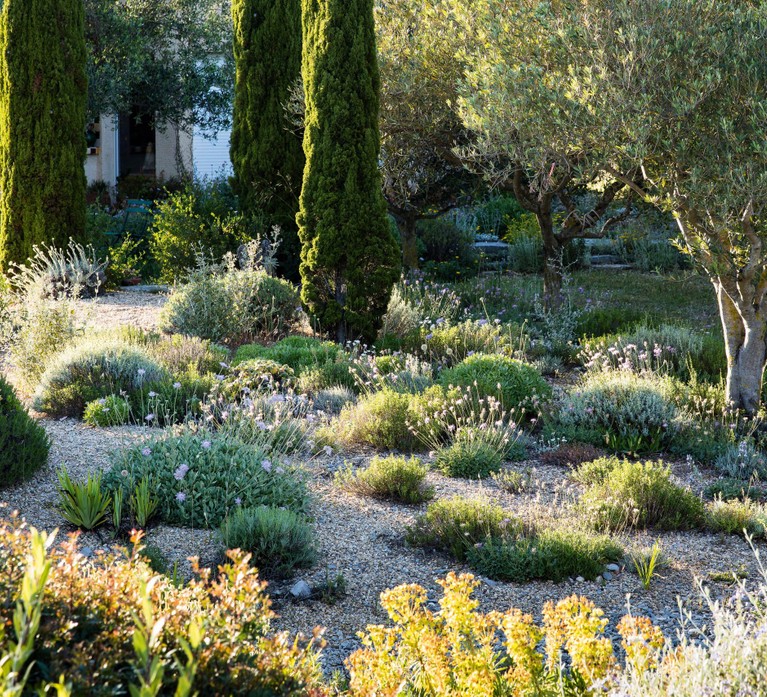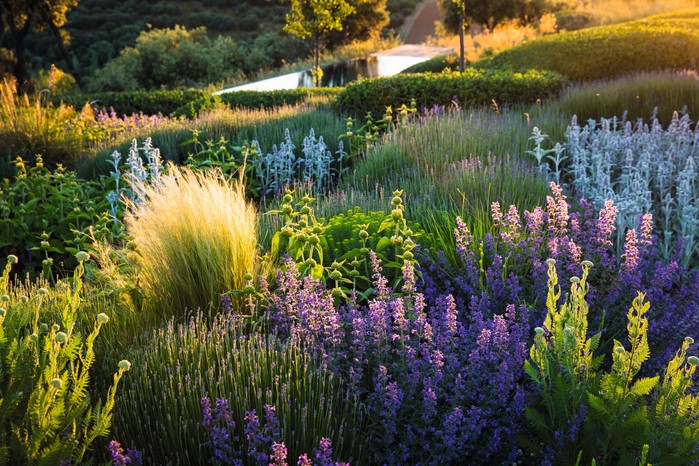
How to plan a dry garden plus plant combinations
Spanish designer Fernando Martos explains why he combines the beauty of Spain's arid landscape with English planting ideas in his dry garden designs. If we're considering climate change, his approach could be a useful one for us to take note of
Central Spain is not the most hospitable of gardening environments. Winters are cold, while summers can be be intensely hot for long periods and with little rain. Traditionally, Spanish gardens have followed French or Italian models, but now a new generation of garden designers is emerging, inspired by a love of the Spanish landscape and by the plant communities that naturally thrive there. Here, Spanish garden designer Fernando Martos gives advice for planning a dry garden and shares some of the combinations of plants he uses in his design.
Here's more on how gardeners need to adapt to drought.
Planning a dry garden
- Choose plants from regions with a long, hot, dry season that have a ‘low water requirement’ rather than tolerance to drought.
- Encourage plants to root deeply by breaking up the soil in the planting hole as deeply as possible at the base. Water infrequently and heavily; ‘little and often’ only encourages surface rooting.
- Plant when small. Older or larger container-grown plants will have shallow root systems, which make them vulnerable to heat and drought.
- Grow plants ‘lean’ and don’t feed them. Plants are more resilient if grown slowly. Feeding plants from stressful environments may result in several years of strong growth followed by a sudden demise.
- Mulching keeps moisture in the soil and, crucially, roots cool. Chipped bark is good, but gravel or other mineral mulches are better, but only if the soil in the planting is not going to be disturbed.
- Irrigation is essential for plants to look good, rather than just survive. But as some plants, such as lavenders, suffer an increased risk of fungal disease, plants should be grouped according to their irrigation needs.
- Ugly irrigation pipes can be disguised with mulch. Drip irrigation systems where pipes lead water to individual plants are the most economical.
Everything you need to know about hosepipe bans
Four drought-tolerant planting combinations from Olivier and Clara Filippi’s garden in France

Dry garden plant combinations
Light and airy

Teucrium fruticans – clipped into mounded shapes – dominates here, its spring flowers add to the beauty of the grey foliage that complements the Lavandula angustifolia‘Hidcote’. Several clumps of Calamagrostis x acutiflora ‘Karl Foerster’ add bulk while, in the background, the taller Stipa gigantea is illuminated by backlighting – crucial to make the most of this early flowering grass.
Golden glow

Backlit grass Stipa tenuissima grabs the attention here, its feathery plumes complementing the more defined Phlomis russeliana. In the foreground Nepeta ‘Six Hills Giant’ is in full flower, about to be joined by similarly toned Lavandula angustifolia‘Hidcote’ and yellow Achillea filipendulina ‘Parker’s Variety’. Further back, the silver-leaved Stachys byzantina makes a dramatic intervention among a drift of lavenders.
Bright and bold

Surrounding an airy clump of Stipa tenuissima the golden-yellow Phlomis ‘Edward Bowles’, the densely shrubby hybrid Achillea filipendulina ‘Parker’s Variety’, and the richly coloured Nepeta ‘Six Hills Giant’ and Iris ‘Syncopation’ – all plants that have a low water requirement – create a light and fluid composition. Behind is a veil of Stipa gigantea flower heads – these airy displays never block views, but add extra sparkle.
Soft curves

A Quercus ilex trunk links the garden to the landscape. A soft mound of the flower-covered Cistus x skanbergii echoes the curve of the grass Sesleria autumnalis, which slowly forms tight mats of pale foliage that complements the colours around it. Behind, the more flamboyant Stipa gigantea draws the eye towards drifts of Nepeta ‘Six Hills Giant’ and Stachys byzantina.
For more on dry gardens, don't miss our piece on dry garden guru Olivier and Claire Filippi's Le Jardin Sec.
Here's our list of the best drought tolerant plants.
Authors
Fernando Martos is a landscape designer based in Madrid, Spain, who specialises in gardening for a dryer climate.

Niwaki bundle worth £57 when you subscribe
Subscribe to Gardens Illustrated magazine and claim your Niwaki bundle worth £57
*UK only

Container Gardening Special Edition
The Gardens Illustrated Guide to Container Gardening.
In this special edition, discover colourful flower combinations and seasonal planting schemes for pots designed by leading plantspeople, and essential know-how for container gardening success. Just £9.99 inc UK p&pBy entering your details, you are agreeing to our terms and conditions and privacy policy. You can unsubscribe at any time.

Gardens of the Globe
From botanical wonders in Australia to tranquil havens closer to home in Ireland, let this guide help you to discover some of the most glorious gardens around the world
By entering your details, you are agreeing to our terms and conditions and privacy policy. You can unsubscribe at any time.




